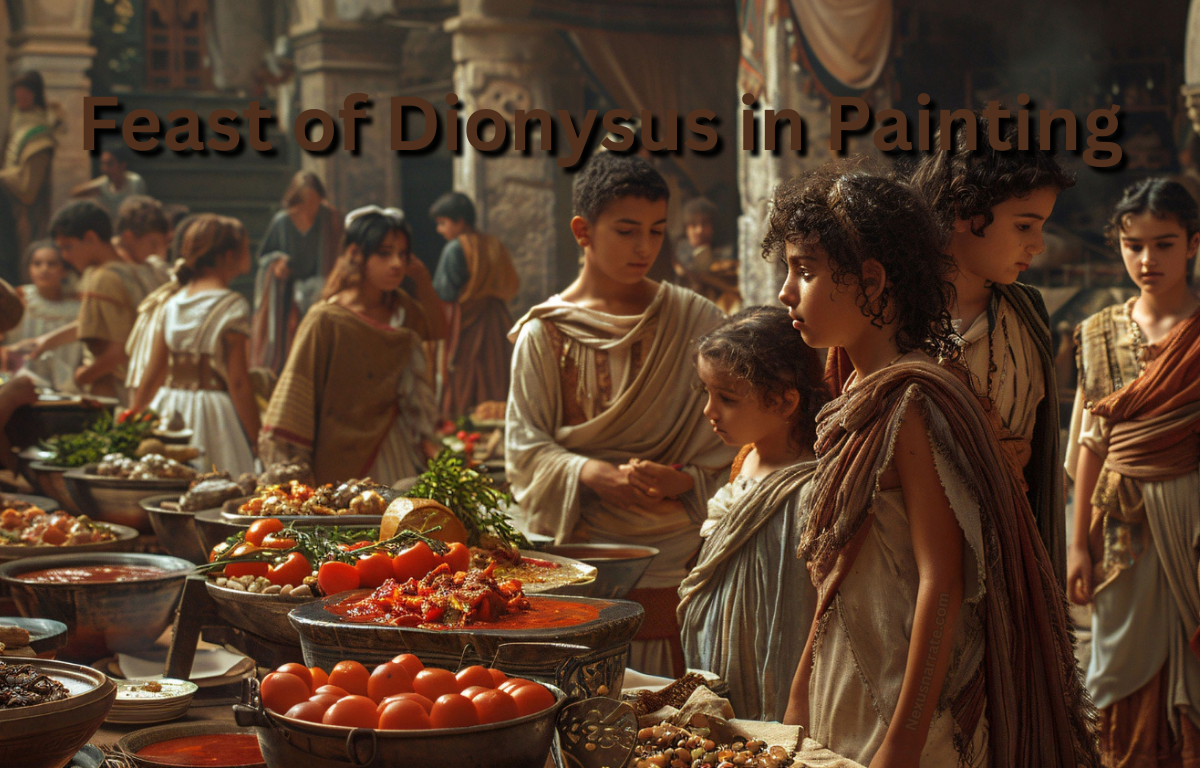The Feast of Dionysus in Painting has long captivated artists throughout history. This vibrant celebration, dedicated to the Greek god of wine, revelry, and ecstasy, serves as a rich source of inspiration in painting. From ancient frescoes to contemporary canvases, the depiction of this festival reflects society’s evolving relationship with pleasure and chaos. As we journey through time, we’ll explore how these artistic interpretations have transformed—each brushstroke echoing cultural shifts and personal expressions. Join us in uncovering the layers behind this enchanting theme that continues to resonate today!
The Evolution of Feast of Dionysus in Painting
The Feast of Dionysus in Painting has been a vibrant theme in art, tracing its roots back to ancient Greece. Early depictions showcased scenes filled with merrymaking, wine flows, and theatrical performances. Artists captured not just the revelry but also the spiritual essence of this celebration.
As time progressed, artists began infusing their own cultural contexts into these works. The Renaissance saw a revival that celebrated humanism and nature through lush landscapes surrounding Dionysian themes. Paintings from this era were rich in color and detail, reflecting both joy and a deeper philosophical inquiry.
In later periods like Baroque and Neo-Classical art, the emotional intensity heightened further. Dramatic compositions illustrated the ecstatic experiences associated with Dionysus while showcasing technical mastery. Each piece served as a commentary on society’s evolving attitudes toward pleasure and liberation.
Also Read: https://nexusnarrate.com/antarvacna/
Introduction
The Feast of Dionysus in Painting has captivated artists for centuries. Feast of Dionysus in Painting an ancient celebration, dedicated to the Greek god of wine and revelry, is rich with themes of ecstasy, nature, and transformation. It serves as a vibrant backdrop that allows painters to explore human emotion in its most exuberant form.
From the earliest depictions to contemporary interpretations, the Feast of Dionysus in Painting evokes a sense of joy and liberation. Artists have drawn inspiration from its mythological roots, capturing moments filled with movement and life. The interplay between chaos and harmony reflects society’s ongoing relationship with pleasure.
As we delve into the evolution of this theme in painting, we uncover how each era reinterprets these visual narratives. Each brushstroke tells a story rooted in tradition yet infused with modern perspectives on art and existence.
The Feast of Dionysus in Painting in Ancient Art
The Feast of Dionysus in Painting holds a special place in ancient art, celebrating the Greek god of wine and revelry. Artists depicted lively scenes filled with intoxicated revelers, vibrant landscapes, and lush vines. These works often showcased human emotions—joy, ecstasy, and sometimes chaos.
Vase paintings were particularly significant in capturing these moments. They illustrated mythological narratives where Dionysus led his followers into ecstatic dances and celebrations. The intricate details on pottery provide insight into ancient rituals tied to fertility and abundance.
Sculptures also highlighted this theme, portraying figures engaged in dance or music under the watchful gaze of their divine patron. Each piece serves as a window into an age that revered nature’s cycles through artistic expression.
The Renaissance Revival of Dionysian Themes
During the Renaissance, artists rediscovered classical themes, and the Feast of Dionysus in Painting became a vibrant focal point. This period marked a shift back to nature, pleasure, and human emotion. Artists like Titian and Rafael infused their works with an exuberance that echoed ancient celebration.
The return to mythological subjects allowed painters to explore deeper narratives surrounding Dionysus. They depicted scenes filled with revelry, wine flowing freely amid lush landscapes. These paintings often highlighted both joy and chaos inherent in Bacchanalian feasts.
Renaissance art embraced detailed realism while celebrating divine ecstasy. Each brushstroke captured the energy of festivities dedicated to Dionysus—symbolizing rebirth through art itself. The emphasis on human experience made these interpretations timeless treasures within art history.
Dionysus in Baroque and Neo-Classical Art
The Baroque period brought a dynamic energy to the feast of Dionysus painting. Artists captured movement and emotion, often depicting lavish celebrations filled with dramatic contrasts of light and shadow. These elements heightened the intensity of joyful Bacchanals, showcasing human exuberance.
In Neo-Classical art, the approach shifted toward clarity and order. Artists like Jean-Antoine Watteau celebrated mythological themes but infused them with elegance and grace. The feast became a symbol of refined pleasure rather than mere chaos.
Paintings from this era emphasized idealized beauty while still honoring Dionysian revelry’s spirit. Figures were composed in harmonious arrangements, reflecting Enlightenment values alongside ancient traditions that honored both reason and passion within life’s pleasures.
The Modern Interpretations of the Feast of Dionysus in Painting
Modern interpretations of the Feast of Dionysus have taken on diverse forms, reflecting contemporary society’s values and challenges. Artists today often explore themes of excess, celebration, and the human experience through vibrant imagery. They blend classical techniques with modern sensibilities to create compelling narratives.
In various mediums—from digital art to installation pieces—creators reinterpret this ancient festival. The spirit of revelry is captured in abstract forms or surreal landscapes, inviting viewers into a world that balances chaos with harmony.
Social commentary frequently accompanies these works, addressing issues like consumerism or environmental degradation while nodding to Dionysian traditions. This fusion encourages audiences to reflect on their own lives amid the jubilant chaos portrayed in feast of Dionysus painting.
Conclusion
The journey of the feast of Dionysus painting spans centuries, reflecting shifts in culture and artistic expression. From the primitive depictions in ancient times to the grandeur of Renaissance masterpieces, this theme has captured artists’ imaginations across ages. Each era brings its unique interpretation, revealing society’s evolving relationship with celebration and indulgence.
Today, modern interpretations continue to explore these themes while infusing contemporary perspectives. Artists use various mediums to engage audiences with fresh narratives surrounding divine revelry. This ongoing evolution highlights how timeless myths resonate within our lives.
As we appreciate these artworks, we not only celebrate their beauty but also connect with a rich history that continues to inspire creativity today. The feast of Dionysus remains a testament to humanity’s enduring love for art and life’s pleasures.





